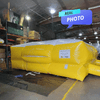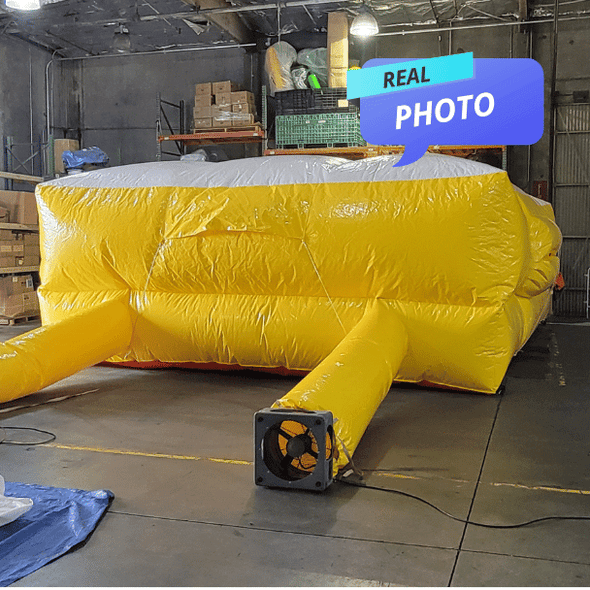Safety: The Vital Role of Firefighter Rescue Air Bags
In the dynamic landscape of firefighting, innovation serves as a beacon of hope, illuminating the path towards enhanced safety and efficiency. Among the myriad tools and technologies at their disposal, rescue air bags stand out as indispensable assets, offering unparalleled assistance in rescuing individuals trapped in precarious situations. In this comprehensive exploration, we delve into the significance of rescue air bags, exploring their mechanics, applications, and the invaluable impact they have on saving lives.
Understanding Rescue Air Bags:
Rescue air bags, also known as lifting air cushions, are pneumatic devices designed to lift heavy objects with remarkable efficiency and precision. Originally developed for vehicle extrication purposes, their utility has since expanded to encompass a diverse range of rescue scenarios, including structural collapses, entrapments, and high-angle rescues. These inflatable cushions harness the power of compressed air to generate lift, capable of hoisting substantial weights with relative ease.
Applications in Firefighting:
The versatility of rescue air bags renders them indispensable in various firefighting operations. One of their primary applications is in extricating individuals trapped beneath collapsed structures—a perilous scenario where traditional lifting methods may prove inadequate or hazardous. By strategically positioning air bags beneath debris, firefighters can gradually elevate the wreckage, creating voids through which victims can be extricated safely.
Moreover, rescue air bags facilitate the swift removal of heavy objects obstructing ingress or egress pathways, such as fallen beams or machinery. In confined spaces where conventional lifting equipment cannot maneuver, these compact yet robust cushions offer a lifeline, enabling rescuers to navigate tight quarters and extract casualties efficiently.
Additionally, rescue air bags play a pivotal role in high-angle rescues, where victims find themselves stranded on elevated surfaces, such as rooftops or cliffs. By deploying air bags as makeshift landing zones or cushioning systems, firefighters mitigate the risk of fall-related injuries, providing a secure means of descent for both rescuers and rescued individuals.
Safety and Reliability:
Central to the effectiveness of rescue air bags is their emphasis on safety and reliability. Manufactured from durable materials capable of withstanding immense pressures, these cushions undergo rigorous testing to ensure optimal performance in the most demanding environments. Furthermore, their intuitive design and user-friendly operation streamline deployment, empowering firefighters to respond swiftly to emergent situations without compromising safety protocols.
Future Innovations:
As technology continues to evolve, so too will the capabilities of rescue air bags. Advancements in materials science, coupled with enhanced automation and sensor integration, hold the promise of further augmenting their efficacy and versatility. From self-inflating systems to remote-controlled deployment mechanisms, the future of rescue air bags is brimming with possibilities, poised to revolutionize the landscape of firefighting and urban search and rescue operations.
Cost Considerations:
One significant pain point for customers is the initial cost associated with purchasing rescue air bags. Fire departments and rescue organizations often operate within budget constraints, making it challenging to allocate funds for specialized equipment like air lifting bags. The upfront investment required for high-quality rescue air bags may deter some customers from making the purchase, especially if they perceive it as an added expense rather than a crucial safety measure.
Training and Familiarity:
Another challenge customers may encounter is the need for comprehensive training and familiarization with rescue air bag systems and lifting tools. Proper operation and deployment of these devices require specialized knowledge and skills, which may necessitate additional training sessions and resources. Firefighters and rescue personnel must feel confident in their ability to utilize rescue air bags effectively, ensuring optimal outcomes during emergency situations.
Storage and Transport Logistics:
Storage and transport logistics present practical challenges for customers considering the purchase of rescue air bags. These devices come in various sizes and configurations, ranging from compact cushions to larger lifting bag systems, necessitating adequate storage space within fire stations or emergency response vehicles. Moreover, transporting rescue air bags to different locations, especially in rural or remote areas, may pose logistical hurdles that customers must address.
Maintenance and Longevity:
Maintenance requirements and longevity are critical factors influencing customers' purchasing decisions. Rescue air bags, like any mechanical equipment, require regular inspection, maintenance, and occasional replacement of components to ensure optimal performance and safety. Customers may be concerned about ongoing maintenance costs and the durability of rescue air bags over time, seeking assurances regarding their reliability and lifespan.
Compatibility and Integration:
Compatibility with existing equipment and integration into established rescue protocols is another pain point for customers. Fire departments and rescue organizations often rely on a range of tools and technologies to execute their missions seamlessly. Customers may hesitate to invest in rescue air bags if they perceive compatibility issues with their current equipment or if the integration process disrupts operational workflows. Ensuring seamless integration and interoperability with existing rescue systems is paramount to overcoming this obstacle.
By addressing these pain points through targeted solutions, such as flexible pricing options, comprehensive training programs, streamlined storage solutions, proactive maintenance plans, and compatibility assurances, manufacturers and suppliers can foster greater adoption of rescue air bags. This, in turn, empowers firefighting and rescue teams to perform their duties with confidence and effectiveness, ultimately saving lives and protecting communities.
In conclusion, rescue air bags represent a cornerstone of modern firefighting and rescue operations, embodying the relentless pursuit of innovation and excellence in the quest to preserve life and ensure public safety. As we navigate the evolving challenges of the firefighting landscape, let us embrace the transformative potential of rescue air bags, recognizing them as indispensable allies in the noble endeavor to protect and serve our communities.












